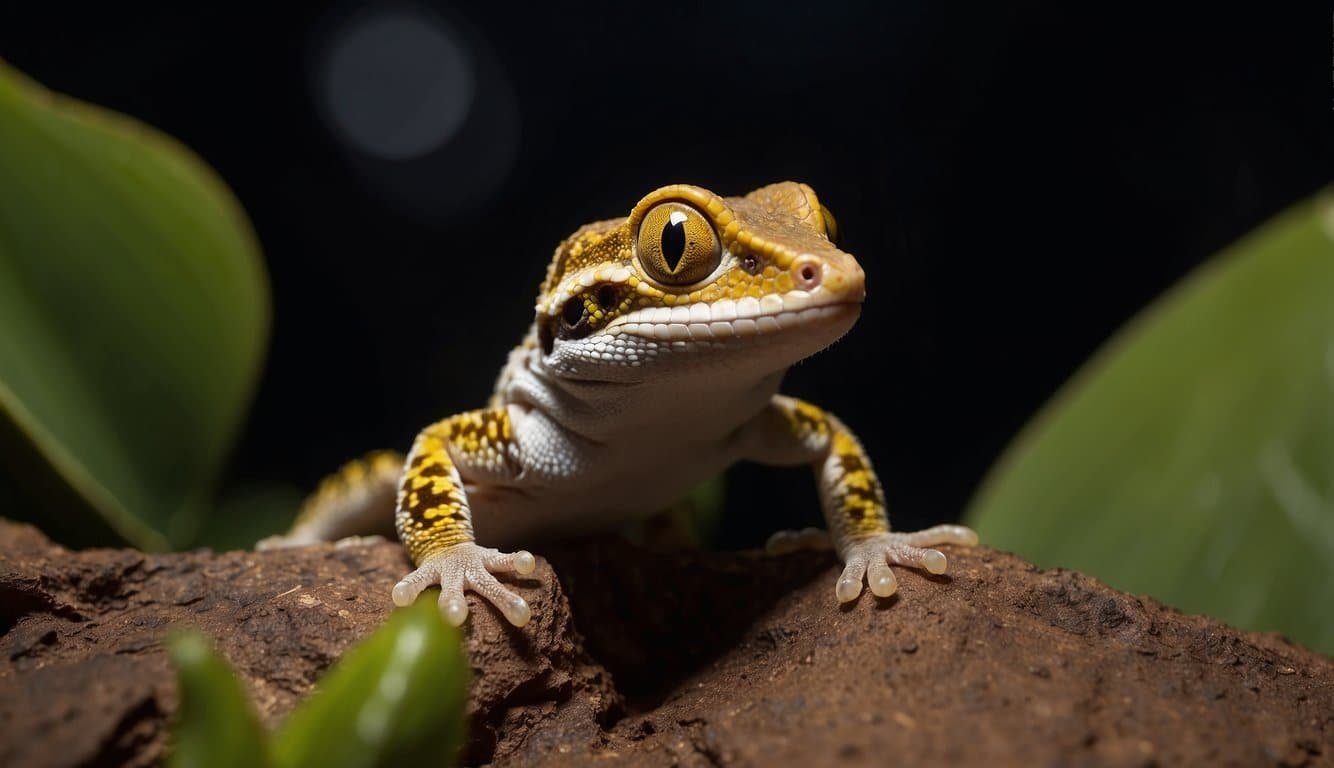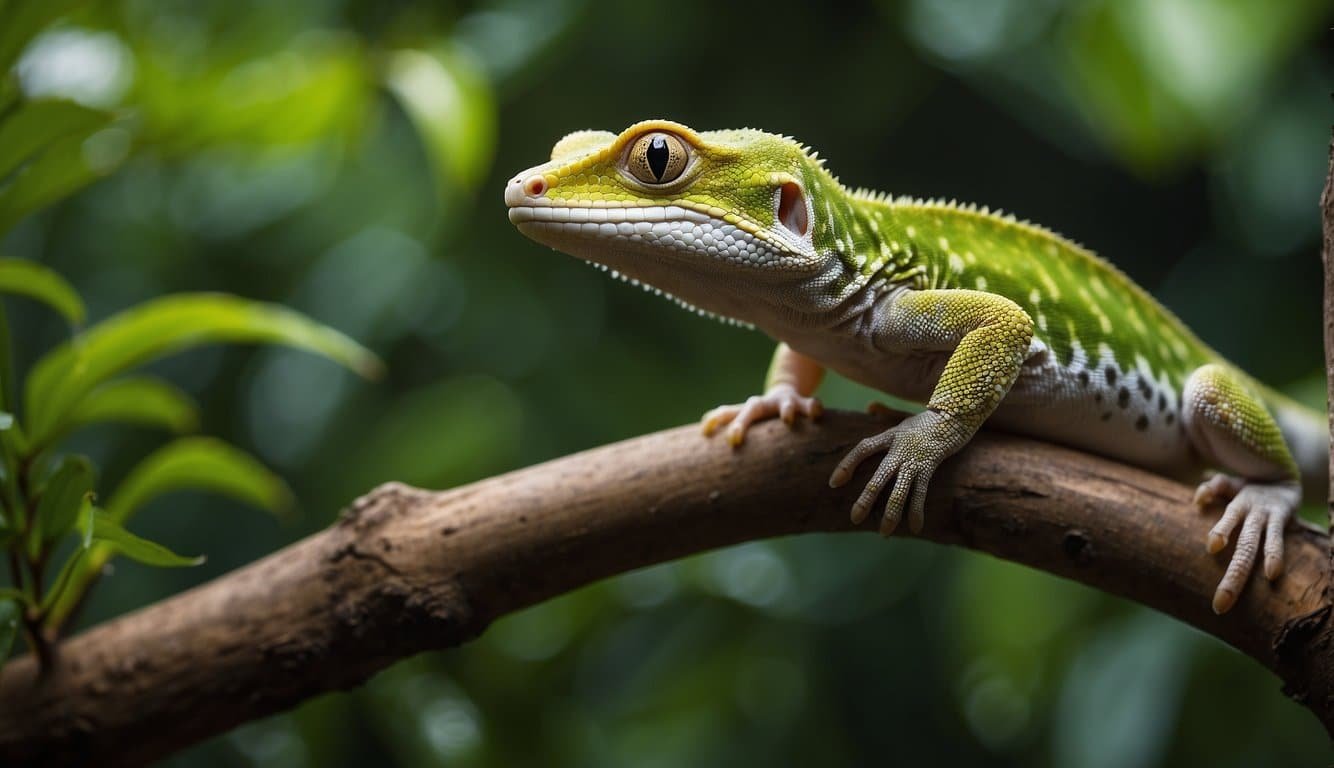Gecko Overview
Geckos are a mesmerizing group belonging to the class of reptiles. Within the reptilian world, geckos are notably known for their unique attributes and diversity. These small to medium-sized lizards are part of the infraorder Gekkota, which is widespread with over 1,500 species categorized into multiple families and genera.
One of the most recognized families is Gekkonidae, which includes the true geckos. The adaptation of geckos is remarkable, allowing them to live in diverse habitats ranging from deserts to rainforests. They have conquered various geographic terrains and can be found on all continents except Antarctica.
These reptiles have several distinct physical features, such as their tails, which can detach to distract predators, and regrow, a phenomenon known as autotomy. Geckos also exhibit a unique trait; they lack eyelids and instead have a transparent membrane that they lick to clean. Their skin often provides excellent camouflage, blending with their environments to evade predators.
An intriguing element of geckos is their ability to adhere to a variety of surfaces. The secret behind this superpower lies in the tiny hair-like structures on their limbs that exploit molecular forces to stick to surfaces, even allowing them to walk upside down on ceilings.
Spanning a vast array of colors and patterns, geckos continue to fascinate scientists and nature enthusiasts alike. Their size can vary greatly, with some species measuring just a few centimeters, while others can grow to impressive lengths. No two gecko species are exactly alike, but each contributes to the rich tapestry of reptilian life on our planet.
Behavior and Diet

Geckos exhibit a remarkable range of behaviors and dietary preferences that are as diverse as the species themselves. They have evolved with unique traits to thrive in their specific environment, from their feeding strategies to their modes of communication.
Feeding Habits
Geckos’ diets vary widely among species; some are insectivores, while others may include fruits and flower nectar. The leopard gecko, for example, largely consumes insects, which they hunt using their keen sense of sight and hearing to detect prey. On the contrary, the day gecko’s diet includes more plant-based food such as nectar and fruits. Many gecko species have adapted to forage in their habitat effectively, and some possess the ability to store fat in their tails, providing an energy reserve.
Communication and Activity
Communication among geckos involves a variety of sounds, such as chirping and clicking. The tokay gecko is known for its loud vocalizations, which play a role in territorial displays and mating behavior. Activity levels in geckos can be diurnal or nocturnal. For instance, nocturnal geckos like the leopard gecko are active at night, which can reduce the risk of predation and exposure to the day’s heat.
Reproduction & Growth
Gecko reproduction involves the laying of eggs, although some species, like the crested gecko, are capable of retaining sperm and laying multiple clutches from a single mating. Female geckos strategically choose laying sites to ensure the safety and ideal conditions for the incubation of their eggs. An astonishing trait observed in geckos is their ability to regrow lost tails, a defense mechanism against predators. This tail regeneration is just one example of the extraordinary capabilities geckos possess for survival and adaptation.
Gecko Care and Habitat

Geckos are a mesmerizing group of lizards known for their unique ability to adhere to different surfaces. Their care involves specific housing needs, understanding their environmental adaptations, species-specific requirements, and knowing their geographical distribution to mimic their natural habitats as closely as possible.
Housing Needs
For pet geckos, a well-structured habitat is critical. Housing should include a temperature gradient created by heaters or lamps to facilitate their thermoregulation. This gradient typically ranges from a basking spot of 85-90 degrees Fahrenheit to a cooler area of about 70 degrees. They also need access to vertical surfaces and ceilings for climbing due to their adhesive setae that utilize van der Waals forces for attachment.
Environmental Adaptations
Geckos have evolved remarkable adhesive pads that allow them to scale smooth surfaces. The van der Waals forces, combined with electrostatic interaction, are harnessed through their setae, enabling this extraordinary feat. This adhesion is self-cleaning, which is essential in their natural debris-filled environments. Unlike many reptiles, geckos can blink as they have movable eyelids.
Species-Specific Care
There’s a wide variety of gecko species, each with unique requirements. The leopard gecko is a nocturnal, ground-dwelling species that doesn’t require much vertical space. On the other hand, the crested gecko and tokay geckos prefer ample vertical space to climb. African fat-tailed geckos have similar care requirements to leopard geckos, while the New Caledonian giant gecko demands higher humidity levels. Day geckos particularly need more UV lighting in their enclosures.
Geographical Distribution
Geckos inhabit a range of environments, from the rain forests of Madagascar to the deserts of North America. For instance, the dwarf gecko thrives in Southeast Asian habitats, while day geckos can be found in the lush environments of Madagascar. When replicating these habitats for pet geckos, it’s crucial to consider the specific continent or region they originate from to create a compatible enclosure environment.
Gecko care can be a delightful and fascinating journey due to these creatures’ unique characteristics and wide distribution across multiple continents. Whether opting for a desert-adapted leopard gecko or a tree-dwelling New Caledonian giant gecko, understanding and recreating their natural habitat will ensure these captivating pets thrive.

